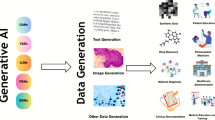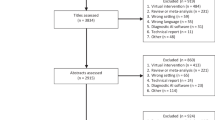Abstract
Understanding how clinical systems actually behave in an era of limited medical resources is critical. The purpose of this study was to determine if a radiofrequency-identification-based indoor positioning system (IPS) could objectively and unobtrusively capture outpatient clinic behavior. Primary outcomes were flowtime, wait time and patient/clinician face time. Two contrasting clinics were evaluated: a primary care clinic (PC) with templated scheduling and an urgent care clinic (UC) with unconstrained visit time and first-in, first-out scheduling. All staff wore transponders throughout the study period. Patients carried transponders from check in to check out. All patients and staff were allowed to opt out. The study was approved by hospital IRB. Standard descriptive and analytic statistical methods were used. Five hundred twenty-six patients (309 patients (PC), 217 patients (UC)) and 38 clinicians (eight (PC) and 30 (UC)) volunteered between April 30 and July 1, 2008. Total FT was not significantly different across clinics. PC wait time was significantly shorter (7.6 min [SD 15.8]) vs. UC (19.7 min [SD 25.3], p < 0.0001), and PC Face time was significantly longer (29.9 min, [SD 19.1] vs. UC (9.8 min [SD 8.5], p < 0.0001). PC Face time distributions reflected template scheduling structure. In contrast, face time distributions in UC had a smooth log normal distribution with a lower mean value. Our study seems to indicate that an IPS can successfully measure important clinic process measures in live clinical outpatient settings and capture behavioral differences across different outpatient organizational structures.



Similar content being viewed by others
References
Perrow, C., Complex Organizations: A Critical Essay, 3rd edition. McGraw-Hill, New York, 1986.
Perrow, C. B., Normal Accidents: Living With High Risk Technologies. Princeton University Press, Princeton, 1999ISBN:0-691-00412-9.
Kohn, L. T., Corrigan, J., Donaldson, M. S., and America IoMUSCoQoHCi, To Err Is Human: Building a Safer Health System. National Academies, Washington, 2000.
Cherry, D., Woodwell, D., and Rechtsteiner, E., National Ambulatory Medical Care Survey: 2005 summary. Vital. Health Stat. (387):1–39, 2007.
Mechanic, D., McAlpine, D., and Rosenthal, M., Are patients office visits with physicians getting shorter? N. Engl. J. Med. 344 (3)198–204, 2001.
Bratt, J., Foreit, J., and Chen, P., A comparison of four approaches for measuring clinician time use. Health Policy Plan. 14:374–381, 1999.
Bryant, M., and Essomba, R., Measuring time utilization in rural health centres. Health Policy Plan. 10:415–421, 1995.
Finkler, S., Kinckman, J., Hendrickson, G., Lipkin, M., and Thompson, W., A comparison of work sampling and time-and-motion techniques for studies in health services research. Health Serv. Res. 28:578–597, 1993.
Guarisco, S., Oddone, E., and Simel, D., Time analysis of a general medicine service. J. Gen. Intern. Med. 9:272–277, 1994.
Jones, E. C., and Chung, C. A., RFID in Logistics: A Practical Introduction. CRC, Boca Raton, 2007.
Calvaneso, G., Where’s your equipment when you need it? Health Manag. Technol. 20:20–21, 1999.
Davis, S., Tagging along. RFID helps hospitals track assets and people. Health Facil. Manage. 17 (12)20–24, 2004.
Krohn, R., RFID: It’s about more than asset tracking. J. Healthc. Inf. Manag. 19 (3)20–23, 2005.
Ostbye, T., Lobach, D., and Cheeseborough, D., Evaluation of an infrared/radiofrequency equipment-tracking system in a tertiary care hospital. J. Med. Syst. 27:367–380, 2003.
Wicks, A., Visich, J., and Li, S., Radio frequency identification applications in hospital environments. Hosp. Top. 84 (3)3–8, 2006.
Christe, B., Cooney, E., Maggioli, G., Doty, D., Frye, R., and Short, J., Testing potential interference with RFID usage in the patient care environment. Biomed. Instrum. Technol. 42 (6)479–484, 2008.
Iadanza, E., Dori, F., Miniati, R., and Bonaiuti, R., Patients tracking and identifying inside hospital: A multilayer method to plan an RFId solution. Conf. Proc. IEEE Eng. Med. Biol. Soc. 2008:1462–1465, 2008.
Ohashi, K., Ota, S., Tanaka, H., and Ohno-Machado, L., Comparison of RFID systems for tracking clinical interventions at the bedside. AMIA Annu. Symp. Proc. 2008:525–529, 2008.
Symonds, J., Parry, D., and Briggs, J., An RFID-based system for assisted living: Challenges and solutions. Stud. Health Technol. Inform. 127:127–138, 2007.
Kim, D., Kim, J., Kim, S., and Yoo, S., Design of RFID based the Patient Management and Tracking System in hospital. Conf. Proc. IEEE Eng. Med. Biol. Soc. 2008:1459–1461, 2008.
Chen, C., Wu, J., and Crandall, R., Obstacles to the adoption of radio frequency identification technology in the emergency rooms of hospitals. Stud. Health Technol. Inform. 118:278–312, 2007.
Fisher, J., and Monahan, T., Tracking the social dimensions of RFID systems in hospitals. Int. J. Med. Inform. 77 (3)176–183, 2008.
Blumenthal, D., Causino, N., and Chang, Y., The duration of ambulatory visits to physicians. J. Fam. Pract. 48:264–271, 1999.
Carr-Hill, R., Jenkins-Clarke, S., Dixon, P., and Pringle, M., Do minutes count? Consultation lengths in general practice. J. Health Serv. Res. Policy. 3 (4)207–213, 1998.
Gottschalk, A., and Flocke, S., Time spent in face-to-face patient care and work outside the examination room. Ann. Fam. Med. 3:488–493, 2005.
Lurie, N., Rank, B., Parenti, C., Wooley, T., and Snoke, W., How do house officers spend their nights? A time study of internal medicine house staff on call. N. Engl. J. Med. 320:1673–1677, 1989.
Martin, C., Banwell, C., Broom, D., and Nisa, M., Consultation length and chronic illness care in general practice: A qualitative study. Med. J. Aust. 171 (2)77–81, 1999.
Potisek, N., Malone, R., Shilliday, B., et al., Use of patient flow analysis to improve patient visit efficiency by decreasing wait time in a primary care-based disease management programs for anticoagulation and chronic pain: A quality improvement study. BMC Health Serv. Res. 7:8, 2007.
Slade, S., and Busing, N., Weekly work hours and clinical activities of Canadian family physicians: Results of the 1997–98 National Family Physician Survey of the College of Family Physicians of Canada. Can. Med. Assoc. J. 166:1407–1411, 2002.
Lee, H., Peering through a glass darkly. International Commerce Review. 7 (1)60–68, 2007.
Author information
Authors and Affiliations
Corresponding author
Additional information
Sponsored by the Massachusetts General Physicians Organization.
Rights and permissions
About this article
Cite this article
Stahl, J.E., Holt, J.K. & Gagliano, N.J. Understanding Performance and Behavior of Tightly Coupled Outpatient Systems Using RFID: Initial Experience. J Med Syst 35, 291–297 (2011). https://doi.org/10.1007/s10916-009-9365-7
Received:
Accepted:
Published:
Issue Date:
DOI: https://doi.org/10.1007/s10916-009-9365-7




